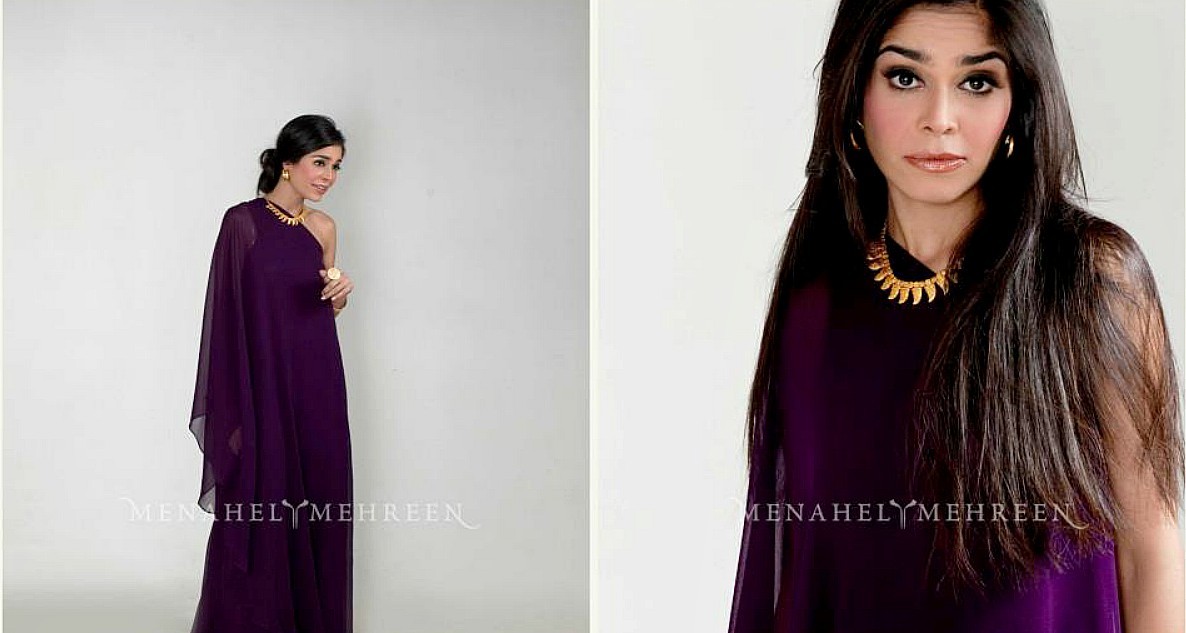Are 'real people' shoots here to stay in Pakistani fashion?
Using friends and it-girls for fashion shoots has officially become a 'thing' in Pakistan.
This season, my social media timeline has been full of shoots featuring “real people” rather than models. In fact, as a fashion blogger, I’ve been part of a couple of shoots myself. With professional makeup and photography, the campaigns turn out attractive and have an appealing authenticity but is the trend a good thing or a bad thing for fashion?
How it all started
The trend started in Pakistan several years ago with mercurial designers Menahel and Mehreen.

Notoriously shy of the showing too much of their designs in order to deter copy-cats, Mehreen and Menahel released a few limited shots with their close friend and muse, it-girl Samira Dada. Heavily shared on Facebook, this being before Instagram became popular, the shots reinforced the designers’ cult status.
Other early adopters of the trend were designers similarly working on a small scale, such Farida Hasan. Farida’s daughter Khuban and her friends have regularly featured in her campaigns.

Nazli Akbar arguably was the one who’s taken the trend to the next level, thanks to the huge interest her #NazliAkbarGirls campaigns received. She has rarely done a shoot with models, always featuring friends and family in fabulous shoots styled by her sister, top make-up artist Shamain.
In this season, however, that the trend has really taken hold. We’ve seen some gorgeous shoots, from niche designers Nazli Akbar and Zohra Alam to high street giant Ideas to name a few.

Serious designers such as Shehla Chatoor and Sana Safinaz have supplemented editorial shoots with “dressing-up” shoots that feature socialites and influencers. Fashion Pakistan Council Chairperson Sanam Chaudri based an entire collection on using non-professionals as models, the idea being crucial to the entire concept of her anti-size-zero campaign.
Also read: A camera, the desert and Beyonce's boots (the story of my high-end Abu Dhabi phootshoot)
What's the fuss about 'real people'?
The campaigns have garnered immense social media traction. 'Real-people' shoots get a lot of likes, making magazines and bloggers more likely to post them. Crucially, these shoots are also more likely to inspire actual sales than editorial shoots.
Pakistan is simply catching up with a global trend where social influencers have become a force in the world of fashion. Editorial shoots are very well for the educated eye, but most people are more likely to buy an outfit they see on someone they can relate to.
Pictures of customers in their outfits have helped propel relative newcomers such as Elan and Sania Maskatiya to stratospheric levels while some of fashion’s old guard, such as Faiza Samee, have been slower to catch on to the power of social media.
The trend is also something of a response to our limited model pool, with some designers chasing freshness through amateurs. However, for serious designers, who aim to tell a story with their collections, there’s nothing like a professional model.
The best professional models are intensely aware of every aspect of their bodies and faces, instinctively using light properly and projecting a host of different moods effortlessly. Amateurs, even if they’re bloggers who understand how to compose a strong image, are not in the same league. As someone who’s been there, I can testify we’re generally nervous, awkward and difficult to direct. Nevertheless, even serious designers have cottoned on to the value of supplementing editorial campaign with more natural shoots.

For the designer, it’s something of a win. Friends do the shoot for free whereas a model would charge a hefty fee. If your friend happens to be a blogger or influencer, there’s plenty of free publicity and even if they’re not, the pictures are bound to get lots of shares on social media. Top influencers now have serious clout, driving trends, and brands cannot afford to ignore this.
Modern shoppers trawl through Instagram and Snapchat looking for ideas before they buy. Opting for informal, less editorial shoots allows brands to show their designs in a more relatable setting. The stylized Eid spreads and luxury interiors may show an airbrushed, idealized view of life but fashion has always been about aspiration.
At the end of the day fashion is as much about commercial considerations as it is about art. Internationally, influencers have become part of the mainstream fashion establishment. Savvy brands all over the world recognize the benefit of combining editorial fashion with wooing customers by showing them designs in a more real setting. Pakistan is just keeping up with the times.





Comments